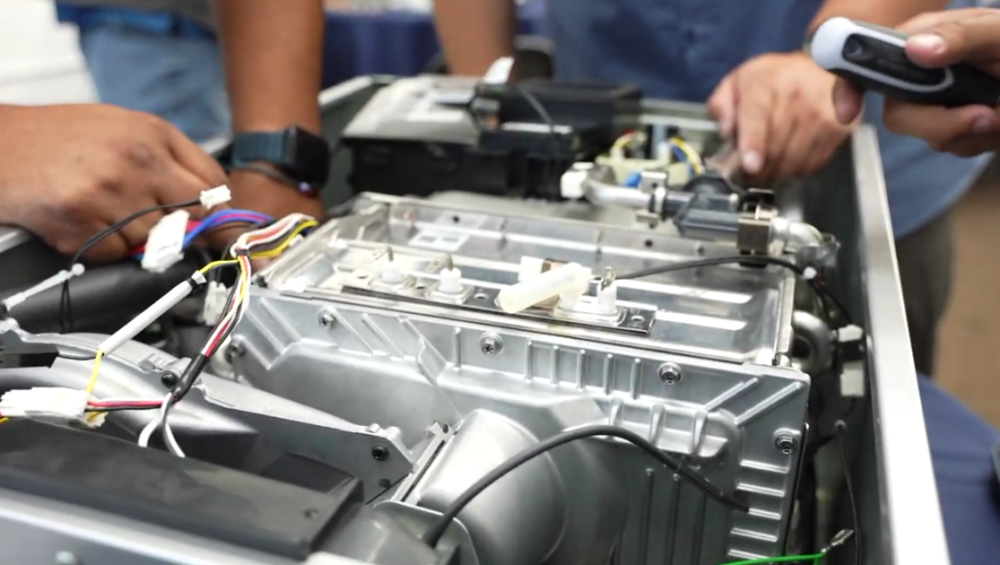
All tankless water heaters have a part inside called a heat exchanger. It, along with a number of other factors, plays a huge role in how well your tankless water heater works, including the material of which the heat exchanger is made. Having the right heat exchanger, whether it be copper or stainless steel, for your tankless water heater is essential to prolong the life of the unit, as the different kinds of heat exchangers can affect its lifespan.
If you’ve found yourself on this page, you’re probably trying to learn more about what a heat exchanger is, what it does, and how it affects your water heater. Or maybe you are trying to learn more about heat exchangers and if there are any benefits to having copper over steel or vice versa.
In this article, I am going to walk you through the two different types of heat exchangers: copper and stainless steel. As your guide to everything heat exchanger-related, this post will answer all of your questions about the part and more such as different types of heat exchangers, costs, along with benefits and drawbacks of each. I’ll also share with you some key differences between the different heat exchangers.
What Is a Heat Exchanger?
Before I dive into the different types of heat exchangers, we must first touch on what even is a heat exchanger.
A heat exchanger in your tankless water heater is the part that heats up cold water from the city to create hot water for your home. It is located inside the unit and is considered the main component within the water heater that gives you the hot water that you use in your home or business. There are two types of heat exchangers: copper and stainless steel.
What Are the Two Types of Heat Exchangers?
The copper heat exchanger is exactly that: a heat exchanger made out of copper. While there are other materials that are used to make a heat exchanger, copper is considered one of the best as it is a cheaper material and highly effective.
A stainless steel heat exchanger is the exact same as a copper heat exchanger, except made out of steel. Along with copper, steel is also considered one of the best materials to have for your heat exchanger as it is also cheap and effective.
What Are the Benefits and Drawbacks of a Copper Heat Exchanger?
Benefits
- Fast hot water
With the copper heat exchanger, you will get hot water at a faster rate due to how quickly copper itself heats up. For example, if you’re looking for almost instant hot water to take a shower, a copper heat exchanger would be best for you. The copper heat exchanger takes only seconds to heat up the water, whereas a stainless steel heat exchanger could take up to a minute.
Drawbacks
- Hard water damage
Due to its material, if you do not have water treatment, you will run into issues with a copper heat exchanger as scale build-up happens quickly. That will ultimately reduce the flow of water and the efficiency of the unit and can cause early unwanted problems for your tankless unit.
What Are the Benefits and Drawbacks of a Steel Heat Exchanger?
Benefits
- Fights off hard water build-up
With a steel heat exchanger, the main advantage lies in the scale. In Southern California, we have some of the hardest water in the country, and if you do not have water treatment, the hard water may not affect the unit as quickly as it would with a copper heat exchanger.
Drawbacks
- Time Consuming
If you do not have a recirculating line, the stainless steel water heater can take longer than a copper heat exchanger to heat up your water, thus causing you to waste more water.
Key Differences Between Copper and Steel Heat Exchangers
So you now know what both copper and stainless steel heat exchangers have to offer, so allow me to lay out some of their key differences.
- With a copper heat exchanger, it will heat up your water at a faster rate than a stainless steel heat exchanger would
- Copper heat exchangers are more prone to scale buildup, which can hit your pockets and also cause serious damage to your tankless water heater
- Stainless steel heat exchanger might provide you with fewer problems early on as it doesn’t get scale buildup as quickly as copper, especially if you have water treatment.
Key Similarities
Now, if you’re thinking, “is there a price difference?” The simple answer is: no.
Prices for both copper and stainless steel heat exchangers are about the same. All the manufacturers are really competitive with each other, so they’re all keeping their prices around the same mark, whether it is a copper or steel heat exchanger.
“And maintenance, what about that?” you say?
Manufacturers recommend that you perform yearly maintenance on the unit, so as long as you’re up-to-date on your yearly maintenance, you’re working to protect your water heater and prolong its life.
In Conclusion…
To recap, we’ve talked about what a heat exchanger is, what it does, along with the differences between having a copper and stainless steel heat exchanger. Both have their benefits and drawbacks, but our technicians here at Monkey Wrench Plumbing, Heating, Air & Electric definitely recommend that you have water treatment properly installed, as having it will protect not only your water heater but also your home. Read more about water filtration here at our Learning Center.
And if you are having any further questions about which heat exchanger is right for you, call us at (818) 213-1773, and one of our call center representatives would be happy to help you.

